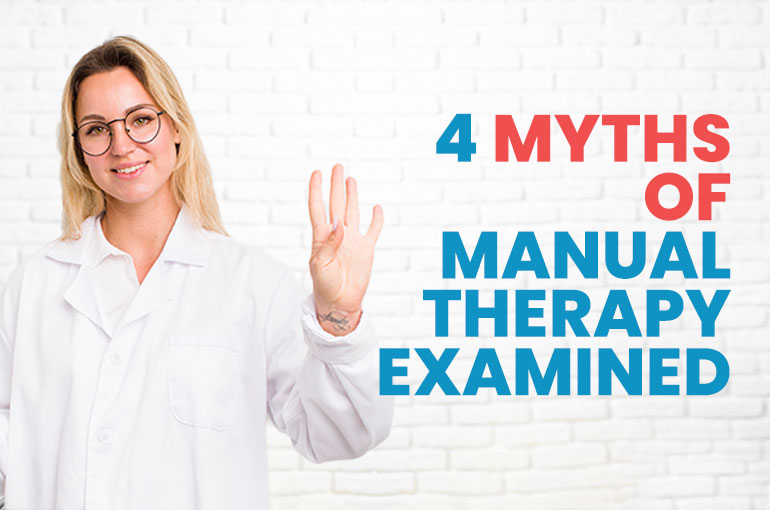
A critical examination of the underlying traps in critical thinking that have resulted in these Four myths. In this blog, we will explore these myths and the impact they are having on our profession.
Fortunately for all of us, especially those suffering from spinal pain, this myth appears to be false. Those who have really positive within-session pain changes after a bout of manual therapy appear to be 3-4 times more likely to have a positive outcome. However, because these findings have not been replicated in the peripheral joints, they should be viewed with caution.
No matter which side of the argument you are on, these results cast a very bright light on all of us. The nervous system's ability to adapt is a wonderful thing. Lean into that and rejoice with your patient if someone's pain can be that easily controlled during a session. But if your patient doesn't exhibit these positive responses during the session, it might be time to focus on bigger issues rather than temporary solutions.
If you intentionally undermine self-efficacy, you disempower the patient's voice by making the clinical encounter about you and your prejudices. This would be a blatant violation of patient-centered care. A patient enters the clinic with "their own beliefs, narratives, and expectations, on several occasions. To account for this, the clinical encounter should be a fluid dance. When we either dogmatically use or oppose manual therapy regardless of the clinical context, we make the decision about us and not our patient
If you are really good at having those open discussions about informed consent then the patient will feel empowered as a result of the treatment course. However, you may need to reconsider your position as an evidence-based clinician if you withhold or promote potential treatment options because they support your biases. Manual therapy cannot be seen as depriving the patient of self-efficacy or as creating healthcare dependency if it is a viable option and is accepted with full informed consent.
Those who dislike manual therapy, it appears on the surface that their experiences are generally better. When we look more closely at the evidence and check for any logical fallacies, we arrive at a more nuanced conclusion. The other possibility is that exceeding patient expectations improves the patient experience. The false equivalence fallacy, which equates a positive patient experience with a positive patient outcome, can be a trap in this situation. Unfortunately, it's not quite that easy. The real solution, however, is simple!
Stop guessing and ask. Find out what your patient expects and then put that into evidence-based practice.
Nowadays, the majority of clinicians are aware that many of these mechanisms and treatment philosophies have been robustly falsified. Furthermore, it doesn't seem to matter all that much how a technique is implemented.
So, our advice is
Have a few simple techniques you can deliver with ease and that don't require a lot of thought. Make sure you don’t let the quest for technical expertise get in the way. Be specific about the needs and reactions to your touch with the patient. That is unique in this situation, not your technical skills themselves.
If you are looking for physiotherapy treatment in Baner, Pune, or an orthopedic clinic in Baner, Pune then Dr.Sumitz Clinic will be the right place for you.